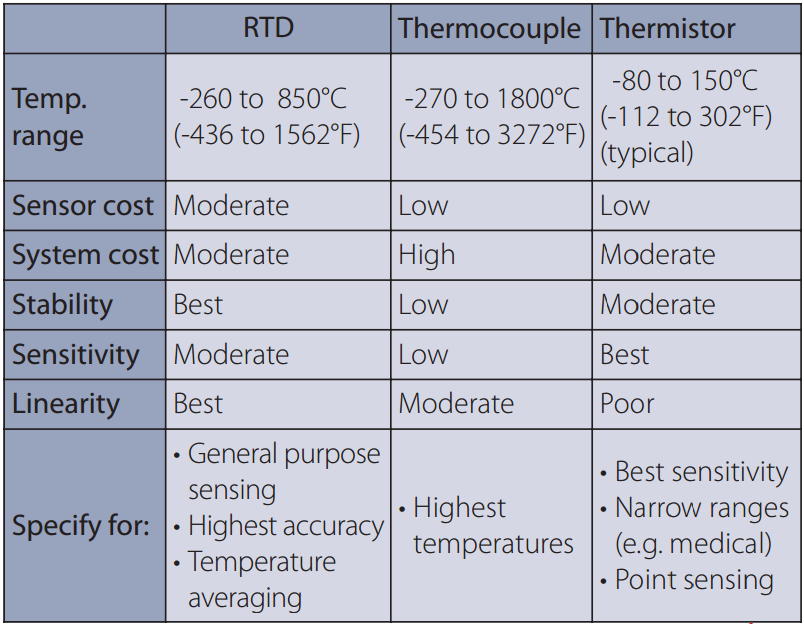- Addr:
- S305, Weiye Building,Pioneer Park, Huoju Hi-tech District, Huli, Xiamen, China 361006
- Email:
- kehao@kehao888.com
Thermocouples and thermal resistors both belong to the contact type temperature measurement in temperature measurement. Although their functions are the same, they both measure the temperature of objects, but their principles and characteristics are not the same:
Firstly, the nature of the signal
Thermal resistance itself is a resistance, and changes in temperature cause a positive or negative change in resistance value; And thermocouples generate changes in induced voltage, which change with temperature Although they are all contact type temperature measuring instruments, their temperature measurement ranges are different. Thermocouples are used in environments with higher temperatures, such as Platinum Rhodium 30-Platinum Rhodium 6 (Type B), which has a measurement range of 300 ° C to 1600 ° C and can measure 1800 ° C in the short term. S-type test 20~1300 (short-term 1600), K-type test 50~1000, short-term 1200) XK type -50-600 (800), E-type -40-00 (900). There are also J-type, T-type, etc. This type of instrument is generally used for higher temperatures above 500 degrees Celsius. In low temperature areas, the output thermoelectric potential is high. When the potential is low, anti-interference measures and secondary meter requirements are high, otherwise the measurement is inaccurate. In addition, in lower temperature areas, the relative error caused by changes in cold end temperature and environmental temperature becomes prominent, making it difficult to obtain full compensation. At low to medium temperatures, a thermistor is generally used to measure temperatures ranging from -200 to 500, and even lower temperatures can be measured (such as using a carbon resistor to measure low temperatures of around 1K). Platinum thermistors Pt100 are now commonly used (Pt50, 100, and 50 also represent the resistance value of thermistors at 0 degrees. In the old division numbers, BA1 and BA2 were used to represent the resistance value at 0 degrees, with BA1 having a resistance value of 46 ohms. Copper resistors are also used in industry, with division numbers CU50 and CU100, but the temperature measurement range is relatively small, ranging from -50 to 150 degrees. In some special occasions, indium resistors, manganese resistors, etc. are also used).

Secondly, on-site judgment in work
Thermocouples have positive and negative electrodes, and compensation wires also have positive and negative terminals. Firstly, ensure proper connection and configuration during operation. Common ones include short circuits, open circuits, poor contact (judged by a multimeter), and deterioration (identified by surface color). When checking, the thermocouple should be separated from the secondary meter. Use a tool to short circuit the compensation wire on the secondary meter. The meter should indicate room temperature and then short circuit the thermocouple wiring terminal. The meter should indicate the ambient temperature where the thermocouple is located (no, the compensation wire is faulty). Then, use a multimeter to roughly estimate the thermoelectric potential of the thermocouple (if normal, please check the process).
The thermal resistance short circuit and open circuit can be determined using a multimeter. In operation, if a short circuit is suspected, simply remove a wire from the resistance end and check the display instrument. If it reaches the maximum value, the thermal resistance short circuit will return to zero, and the wire will be short circuited. When ensuring normal connection and configuration, the meter value will display low or unstable. The possibility of water ingress in the protective tube will be displayed as maximum, and the thermal blockage circuit will display minimum short circuit.
Thirdly, the two materials are different
From a material perspective, thermal resistance is a type of metal material that is sensitive to temperature changes. Thermocouples are bimetallic materials, which produce potential differences at the two ends of two different metal wires due to temperature changes.
Fourthly, the temperature range detected by the sensor is different
Thermal resistance generally detects temperatures in the range of 0-150 degrees (although negative temperatures can be detected), while thermocouples can detect temperatures in the range of 0-1000 degrees (or even higher). Therefore, the former is for low-temperature detection, while the latter is for high-temperature detection.


